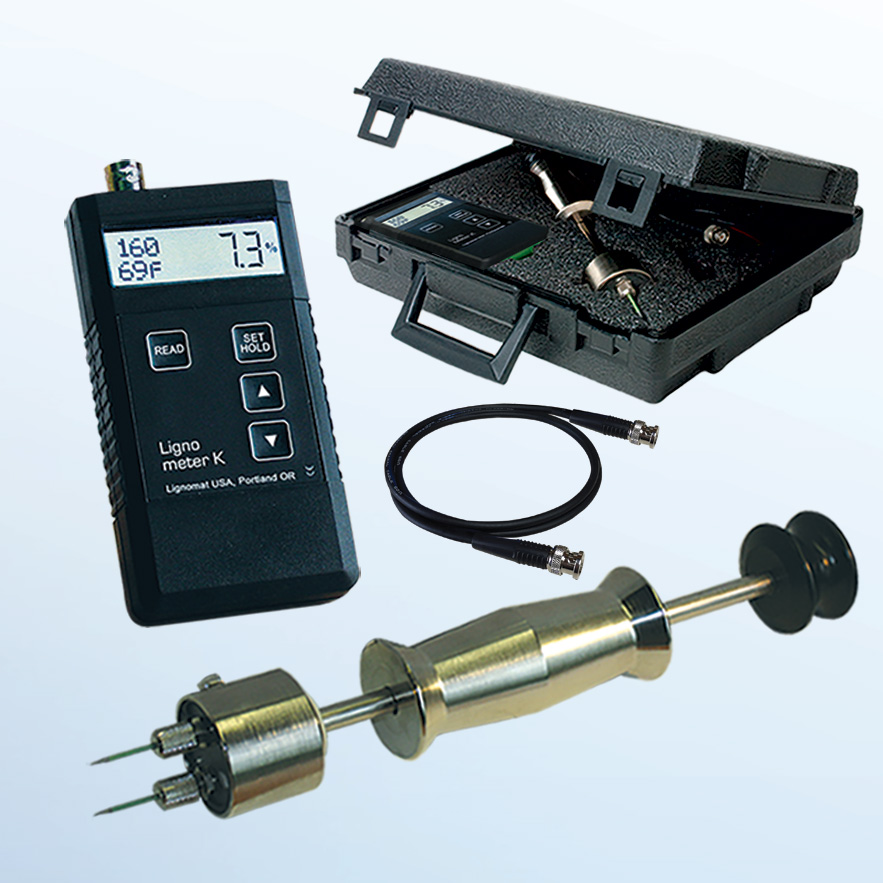Just how to Make Use Of a Moisture Meter to Detect Covert Water Damage in Your Property
Just how to Make Use Of a Moisture Meter to Detect Covert Water Damage in Your Property
Blog Article
Delve Into the Globe of Moisture Meters: Whatever You Need to Know
In the realm of moisture meters exists a world of accuracy and usefulness that usually goes undetected. These tools, while relatively straightforward, hold a wide range of details that can substantially affect various sectors and applications. Comprehending how moisture meters run, the various kinds available, and their varied usages can shed light on their importance in making sure top quality and performance. By exploring the ins and outs of wetness meters, one can reveal a valuable tool that goes beyond mere dimension, offering understandings that can make a substantial distinction in countless fields.
Exactly How Moisture Meters Work
Moisture meters run by measuring the electrical conductivity or capacitance of products to establish the moisture material existing. These meters are invaluable tools throughout various industries, including building and construction, farming, and woodworking. By utilizing different methods such as pin-type or pinless modern technology, dampness meters offer accurate readings that help experts make notified decisions.
Pin-type dampness meters function by putting the sharp pins right into the material being evaluated. On the other hand, pinless dampness meters make use of electro-magnetic signals to check a bigger area without causing any kind of damages to the material's surface.
No matter of the technique utilized, moisture meters play a vital function in avoiding issues such as mold and mildew development, structural damages, or product defects brought on by excess dampness. Comprehending how these meters job is necessary for making sure the quality and honesty of materials in numerous applications.
Kinds of Moisture Meters
Provided the critical duty moisture meters play in numerous markets, it is necessary to recognize the different kinds available to specialists for precisely assessing wetness levels - Moisture Meter. There are mostly two primary sorts of wetness meters: pinless and pin-type wetness meters

On the various other hand, pinless moisture meters utilize electromagnetic sensing unit plates to scan a larger area of the product without triggering any damages. This kind is appropriate for quickly scanning big locations and is typically made use of for floor covering, walls, and ceilings. Pinless meters are practical for taking analyses on finished surface areas without leaving any visible marks.
Both kinds of moisture meters have their benefits and are picked based on the certain demands of the job available. Recognizing the differences between these kinds is essential for specialists to make accurate moisture analyses.
Applications Across Industries
With varied capabilities, moisture meters discover extensive application throughout different sectors, aiding specialists in guaranteeing optimum problems for materials and structures. In the farming field, dampness meters are important for figuring out the moisture material in grains, seeds, and hay, making sure top quality control and preventing mold growth. Building experts count on wetness meters to examine the dampness levels in building materials like concrete, wood, and drywall, which is essential for preserving structural integrity and stopping concerns like rot or mold and mildew. The floor covering sector uses wetness meters to gauge the moisture web content in subfloors prior to installing different flooring treatments, stopping costly damages due to excess wetness. In addition, in the food sector, wetness meters are utilized to keep track of and control moisture degrees in products such as grains, nuts, and dried out fruits to preserve freshness and more high quality. Furthermore, moisture meters play a crucial role in the restoration and damages evaluation industry by aiding experts attend to and recognize water damage in structures immediately. Across these varied markets, dampness meters are crucial tools for ensuring the top quality, security, and longevity of numerous materials and items.
Tips for Making Use Of Wetness Meters
Make use of the wetness meter's calibration setups to make sure accurate readings when gauging the dampness web content in numerous materials. Furthermore, make sure the meter is set to the correct dampness array for the product you are gauging to get the most exact results.
When using a pin-type moisture meter, put the pins to the ideal deepness recommended for the material being examined. This makes certain that the wetness readings are drawn from the correct deepness within the material, supplying a more accurate representation of its moisture web content. For pinless moisture meters, remember to maintain proper call with the material's surface area to obtain trusted analyses.
Regularly examine and replace the batteries in your dampness meter to avoid inaccurate readings as a result of find here low power. When not in usage to prolong its life expectancy and keep its accuracy, Shop the meter in a completely dry and secure place. By complying with these pointers, you can make best use of the performance of your wetness meter and obtain exact wetness content measurements throughout various materials.
Maintenance and Calibration
To make sure the accuracy of wetness material measurements, regular maintenance and calibration of the moisture meter are important steps in its proper functioning. Calibration adjusts the dampness meter to make certain that it gives trusted and regular outcomes.
Calibration needs to be done periodically, specifically if the moisture meter is made use of often or in critical applications where exact measurements are called for. By adjusting the moisture and keeping meter routinely, customers can trust the precision of the dampness material dimensions acquired.
Verdict

To conclude, moisture meters play a vital duty in various markets by properly gauging the moisture content of materials. Recognizing how these devices work, the various kinds readily available, and proper maintenance and calibration are vital for getting reliable results. Whether in manufacturing, construction, or agriculture, the use of wetness meters assists make sure quality assurance and performance in procedures.

In verdict, wetness meters play an important role in various sectors by precisely determining the moisture web content of products.
Report this page